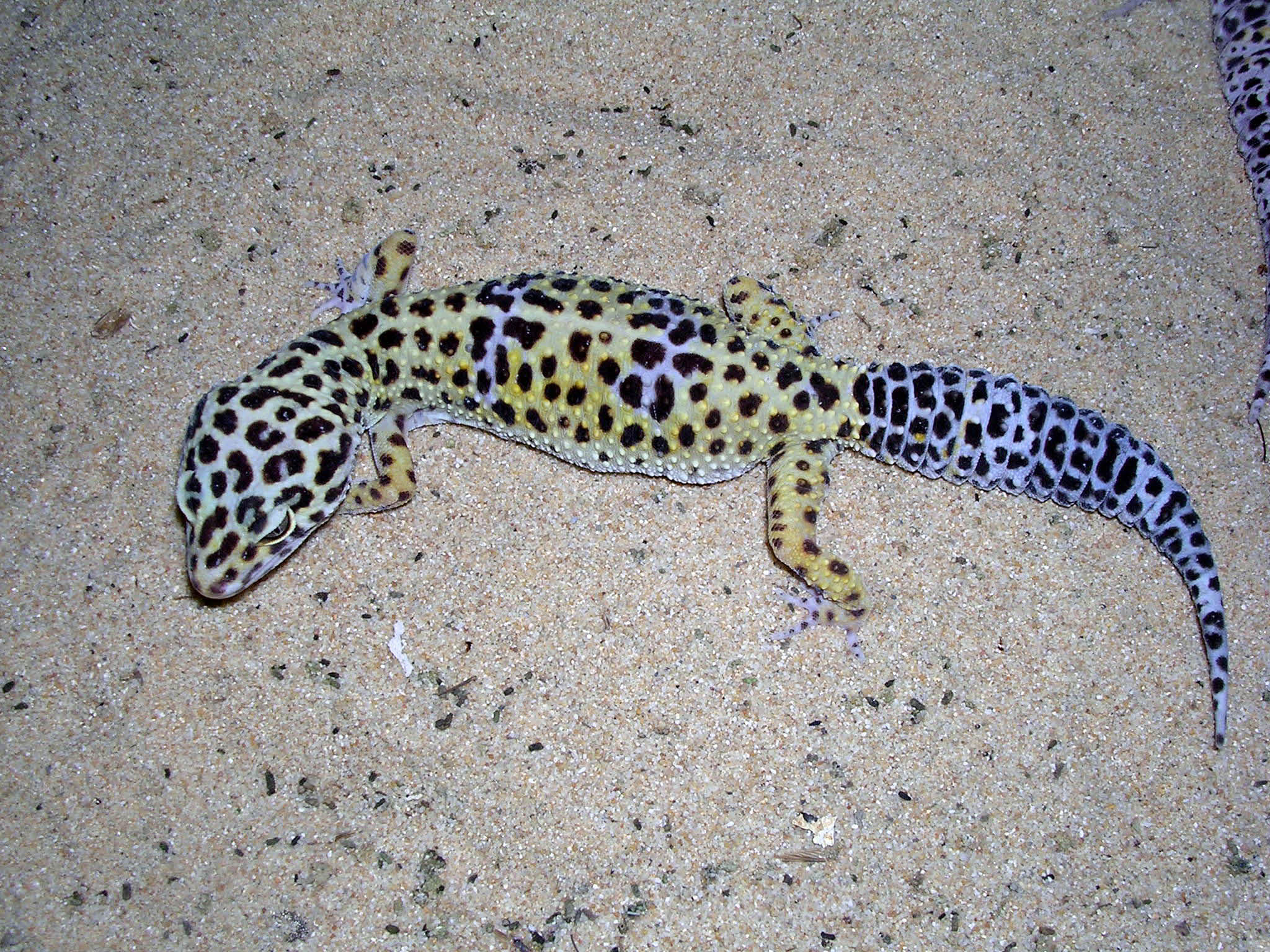- Eublepharis
Taxobox
name = "Eublepharis"

image_width = 240px
image_caption = "Eublepharis macularius "
regnum =Animal ia
phylum = Chordata
classis = Reptilia
ordo =Squamata
familia =Gekkonidae
genus = "Eublepharis"
genus_authority = Gray, 1827
subdivision_ranks = Species
subdivision = " Eublepharis angramainyu"
"Eublepharis fuscus "
"Eublepharis hardwickii "
"Eublepharis macularius "
" Eublepharis turcmenicus"The genus "Eublepharis" was first described by the British zoologistJohn Edward Gray in 1827. The etymology of their name is 'eu' = Good (=true) |'blephar' = Eyelid, and all have fully functional eyelids. Members of this genus are found in eastern and southwesternAsia where they are found in arid and semiarid habitats. These geckos are sturdily built. Their tail is shorter than their snout-vent length and their body is covered with numerous wart-like bumps. The toes do not have adhesive lamellae. Eublepharis are crepuscular or nocturnal ground-dwellers.Five species are currently recognized.
Classification of genus "Eublepharis"
*
Iraqi Eyelid Gecko , " Eublepharis angramainyu"
*"Eublepharis fuscus "
* East Indian Leopard Gecko, "Eublepharis hardwickii "
* Common Leopard Gecko, "Eublepharis macularius "
**Afghan leopard gecko , " Eublepharis macularius afghanicus"
**"Eublepharis macularius fasciolatus "
**"Eublepharis macularius macularius "
**"Eublepharis macularius montanus "
**"Eublepharis macularius smithi "
*Turkmenistan Eyelid Gecko , " Eublepharis turcmenicus"The members of the "
Goniurosaurus kuroiwae "superspecies were formerly considered members of the genus "Eublepharis", and were described under the synonyms "Eublepharis orientalis " Okada, 1936; "Eublepharis kuroiwae "; "Eublepharis kuroiwae kuroiwae "; "Eublepharis kuroiwae splendens " Nakamura & Uano, 1959; "Eublepharis splendens ", "Eublepharis kuroiwae " Maki, 1931, and others.
Wikimedia Foundation. 2010.
